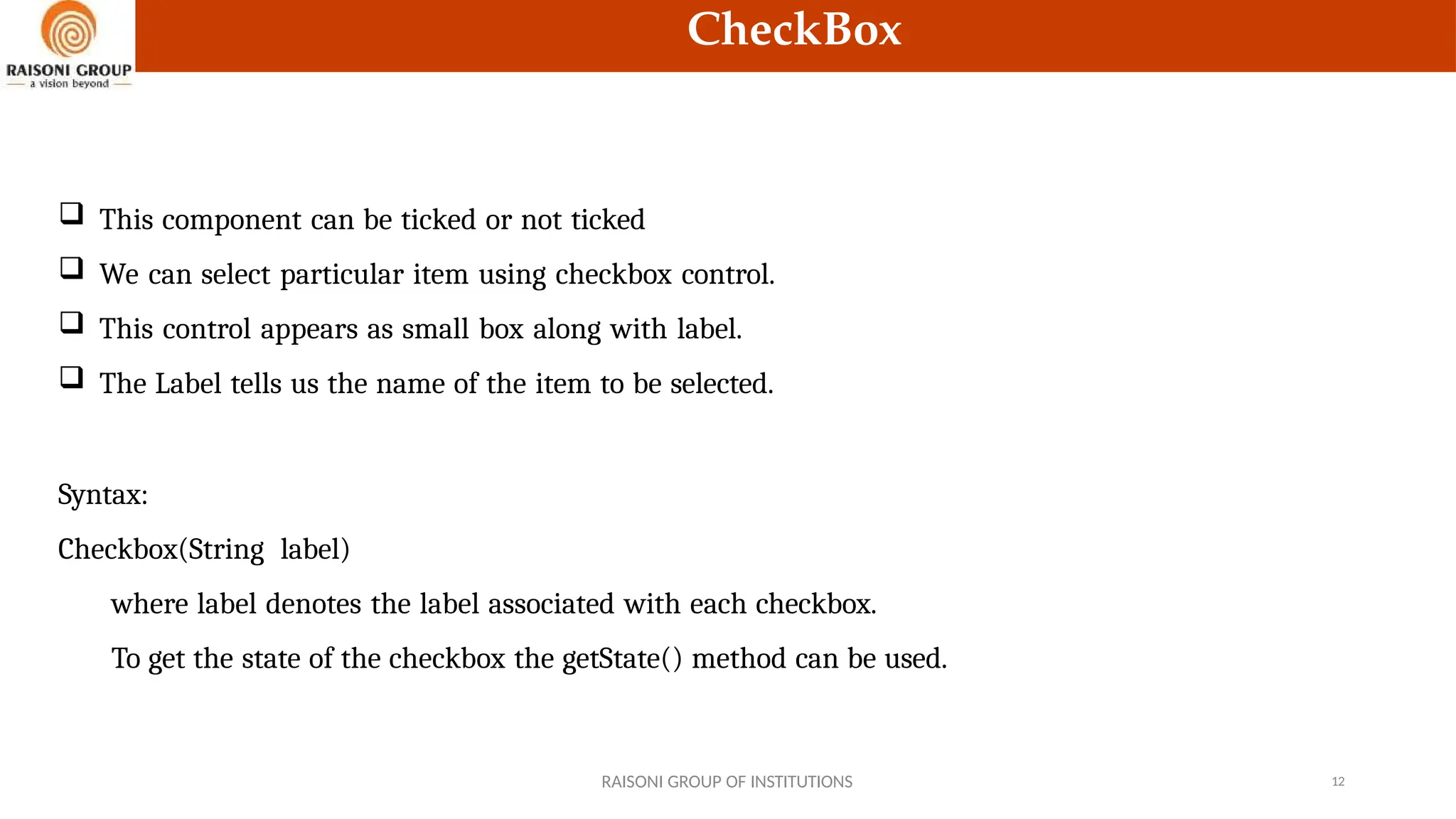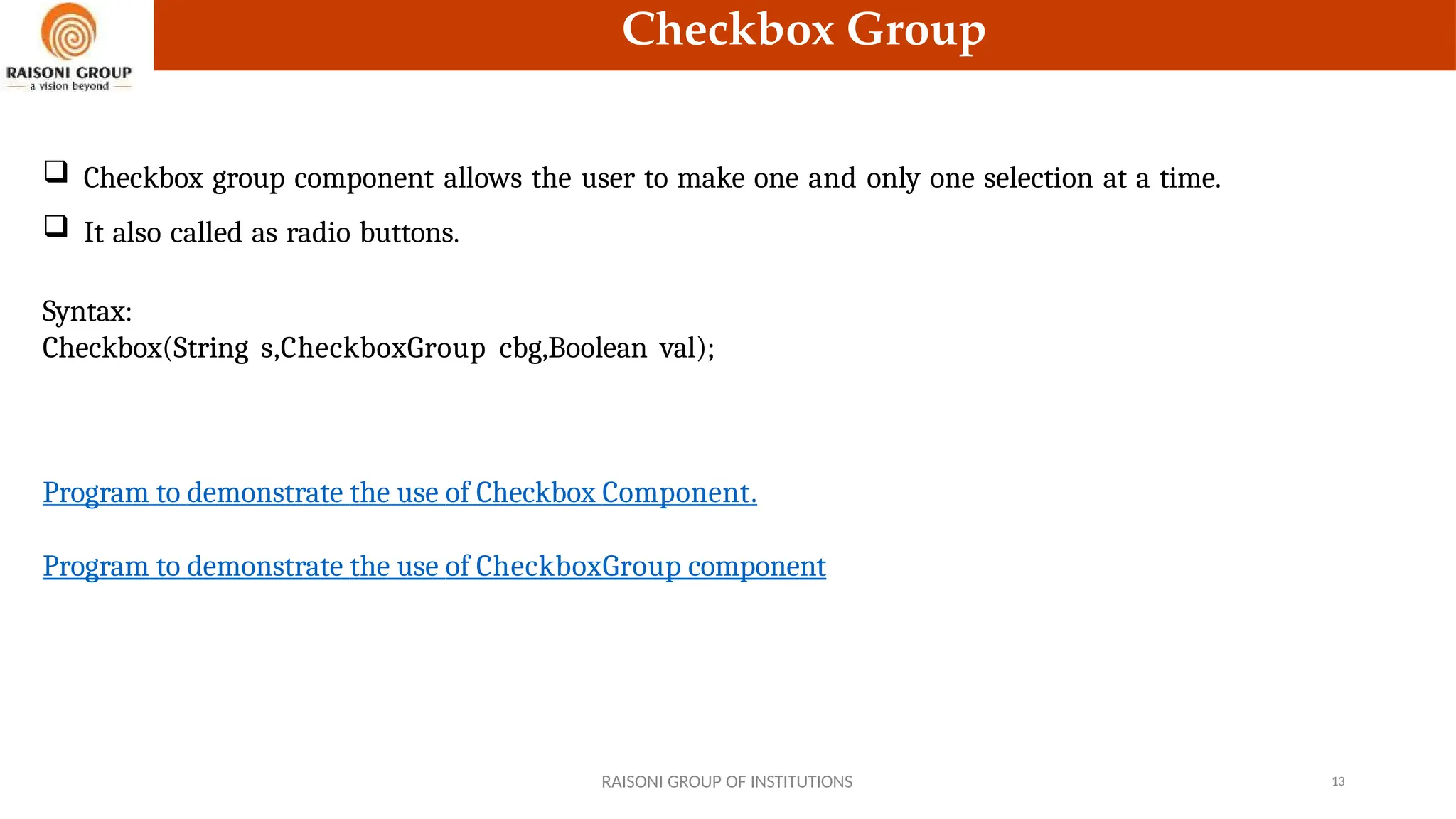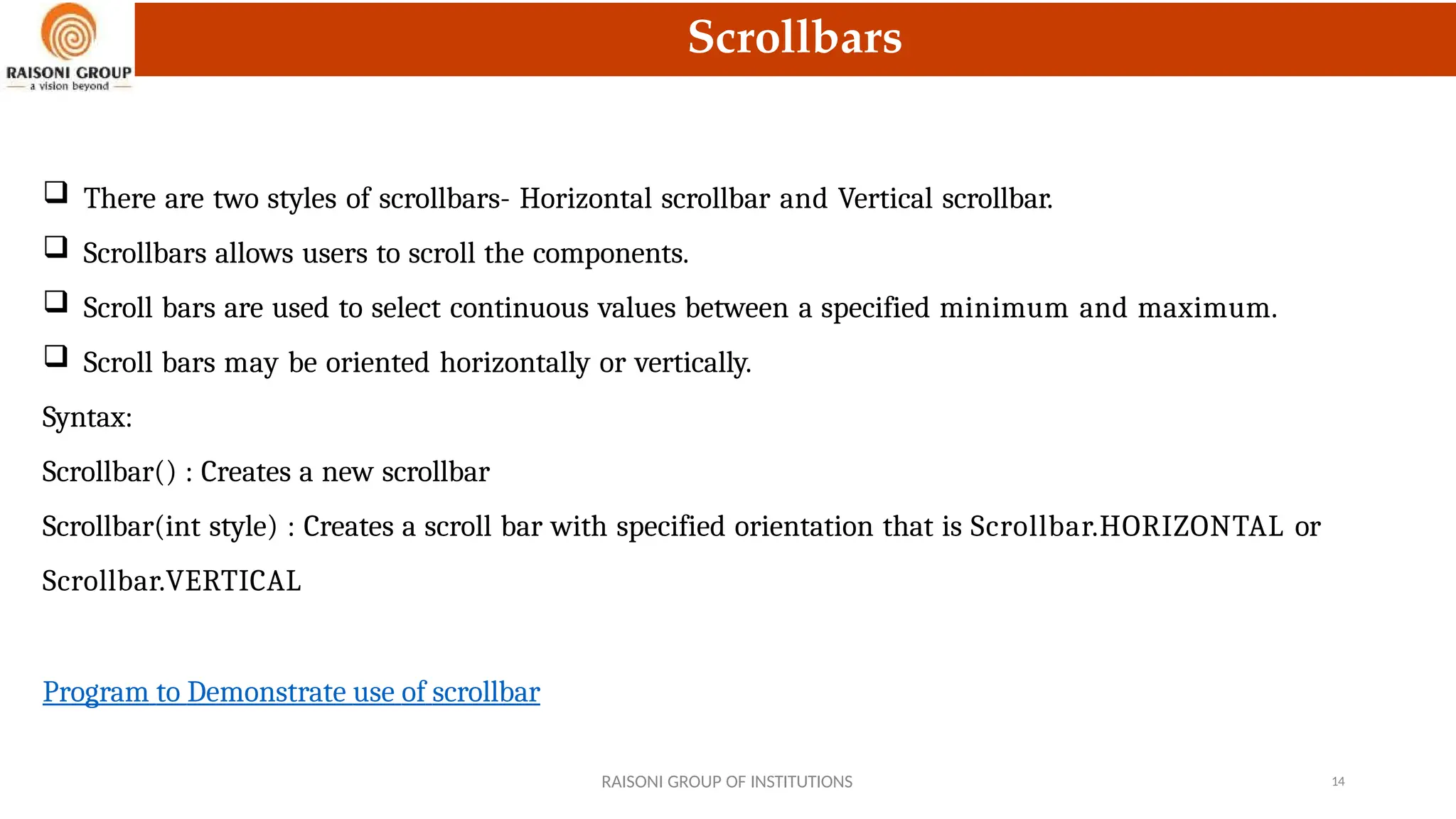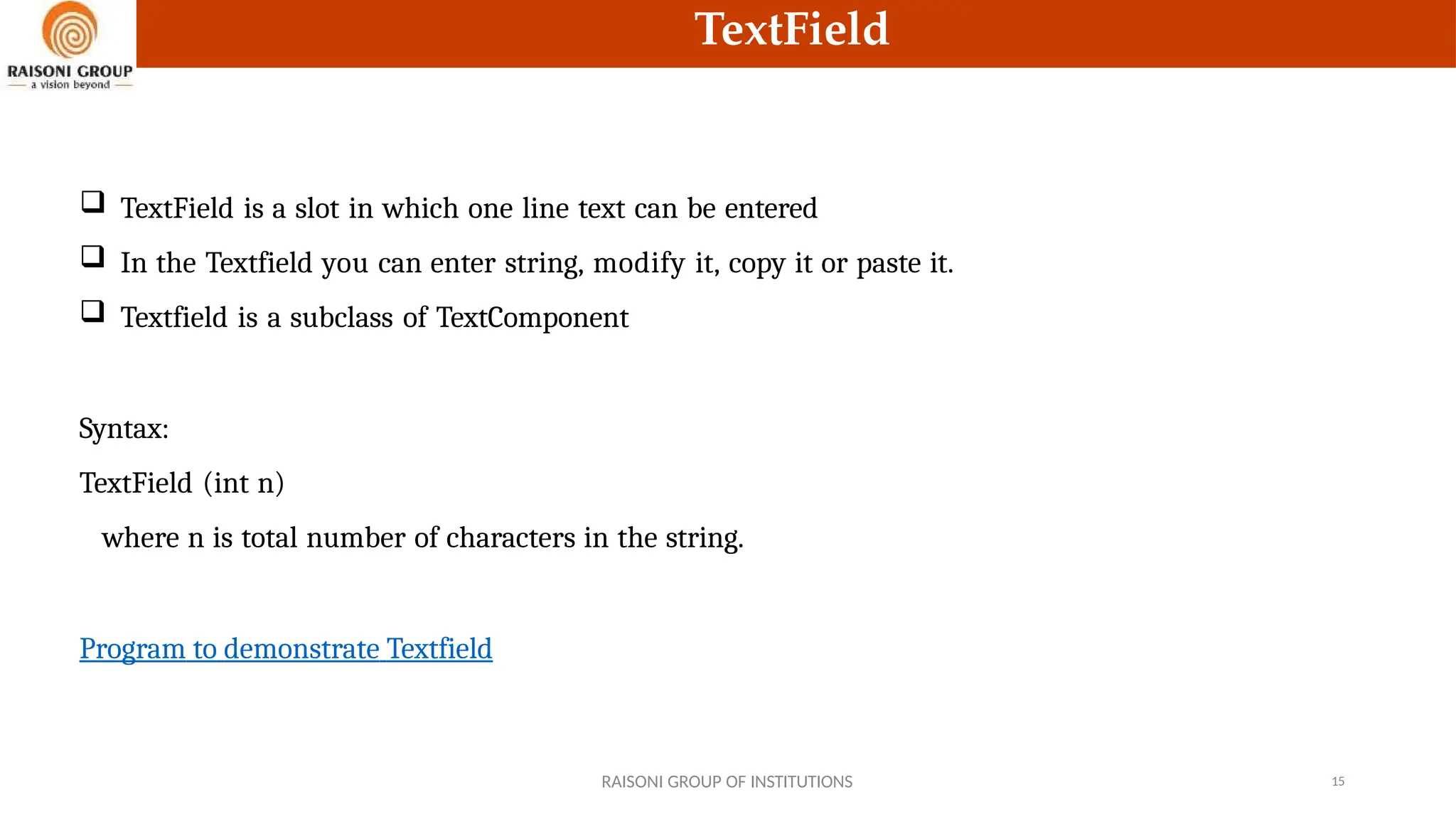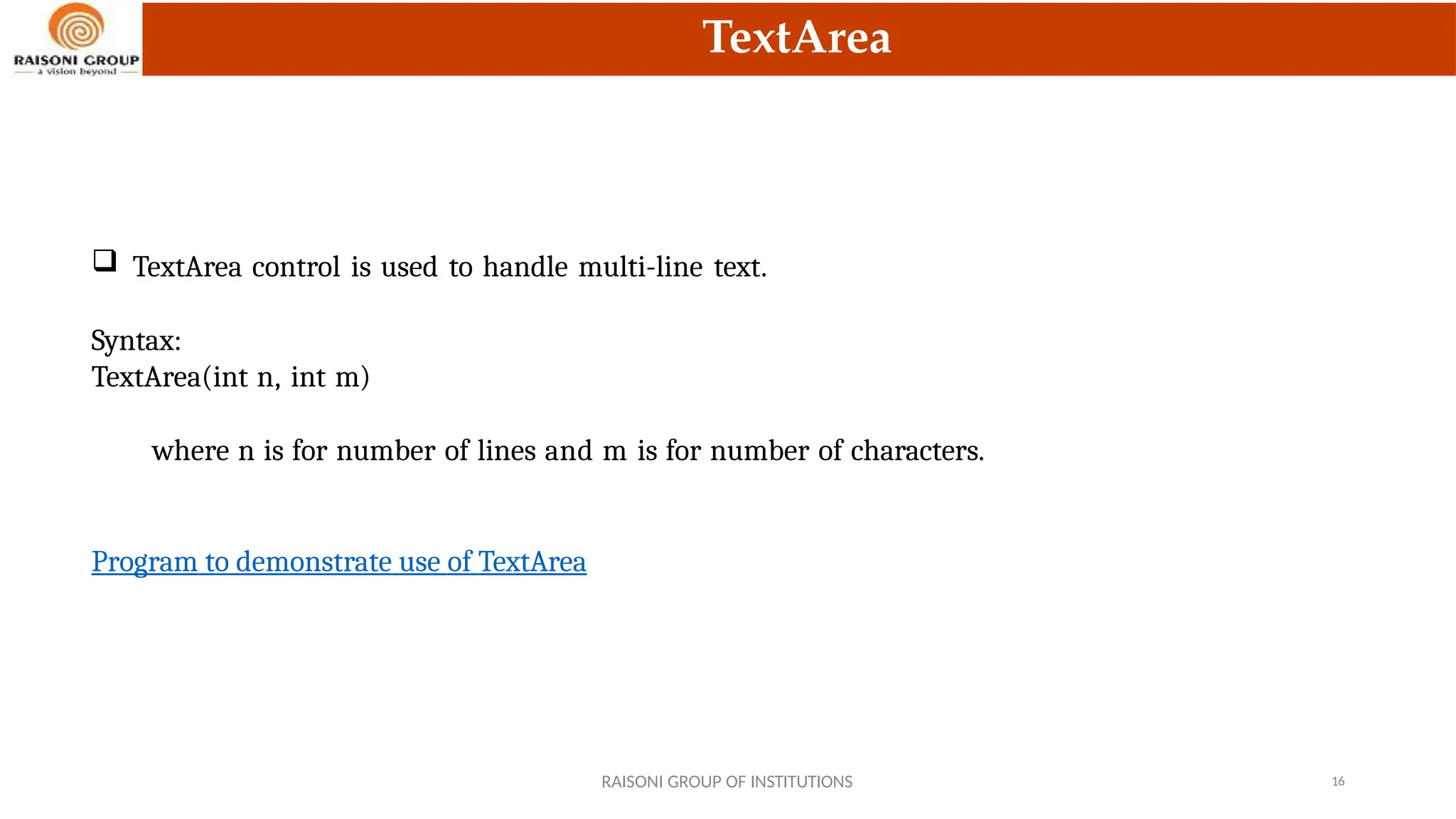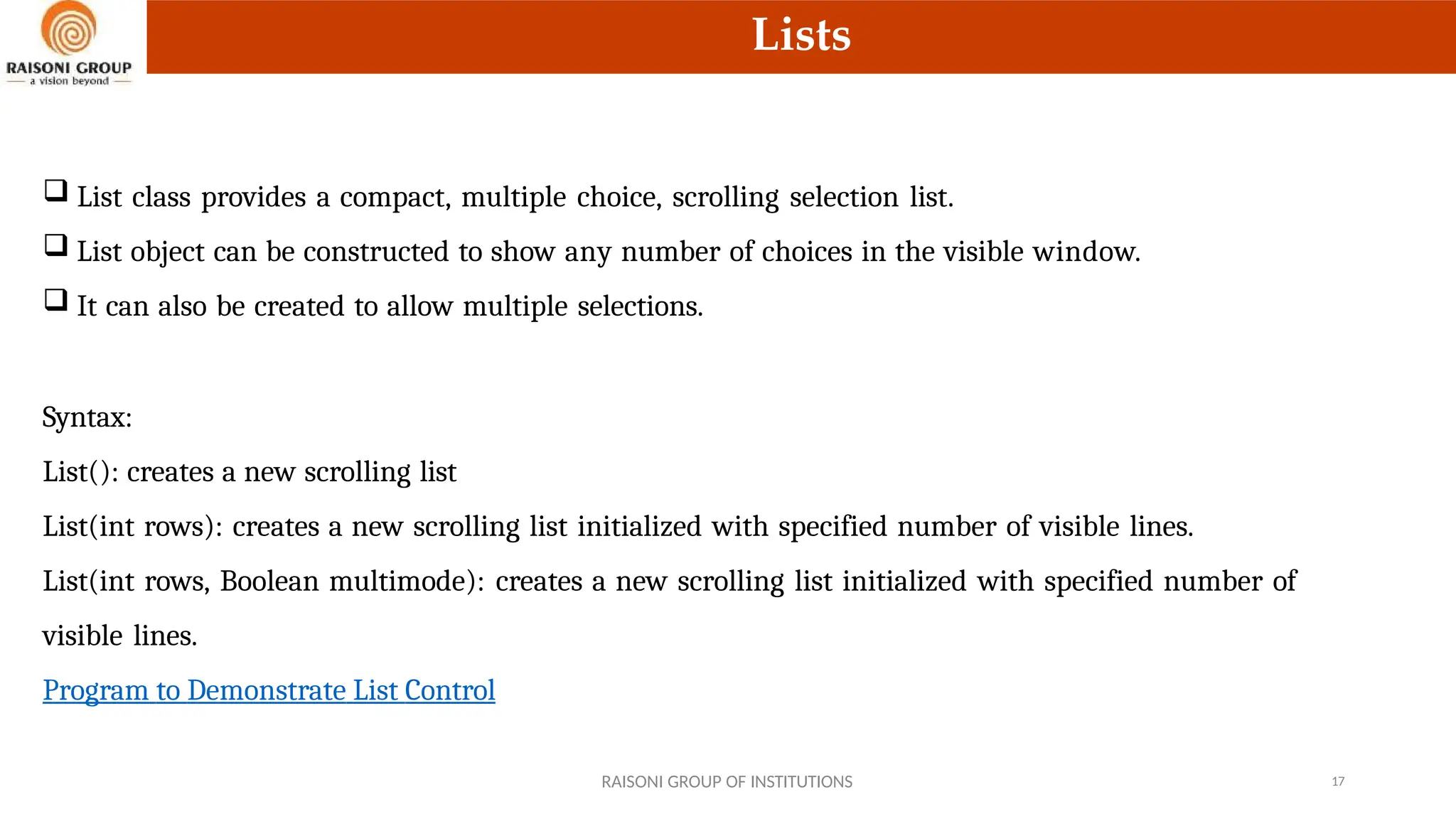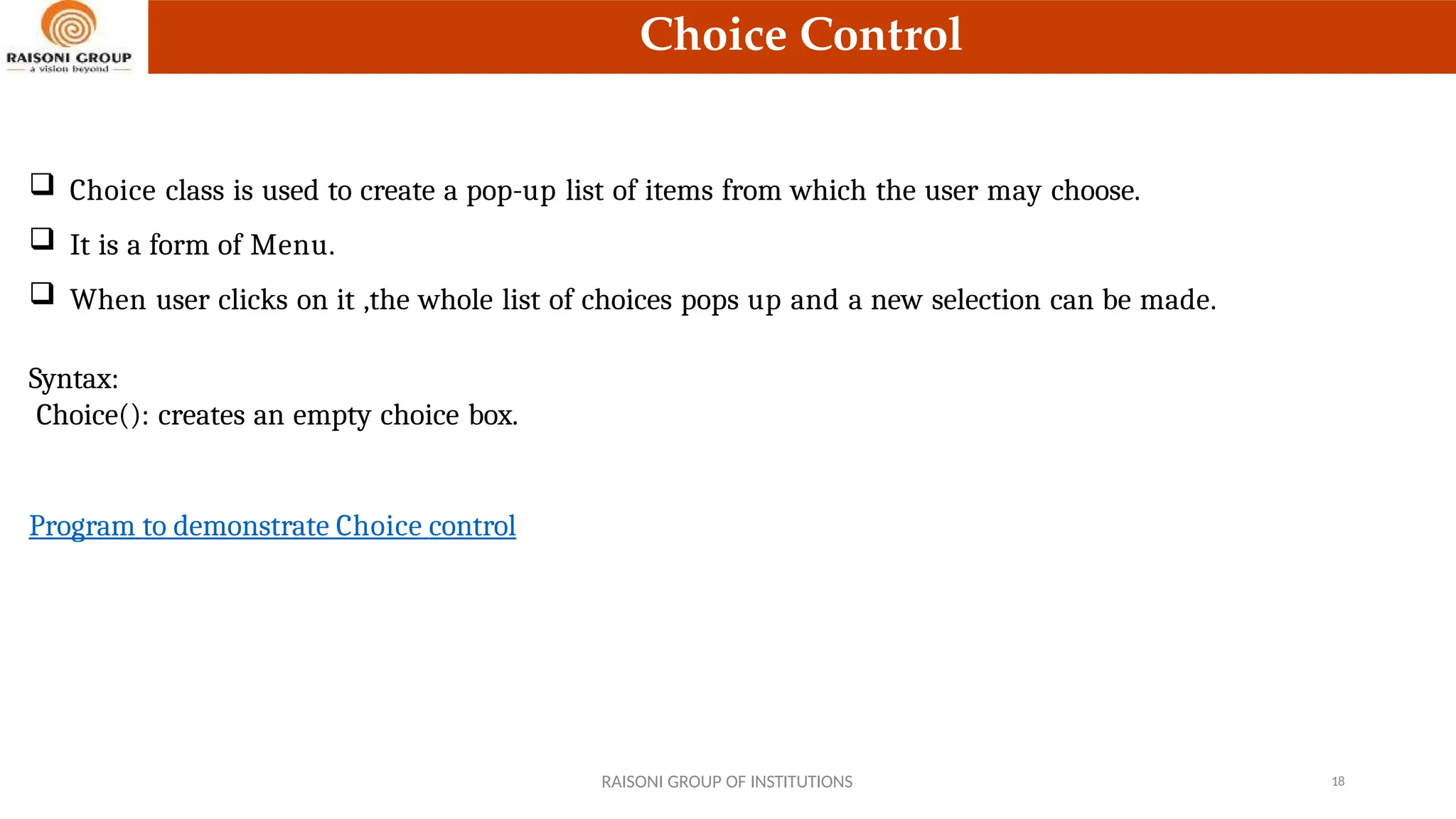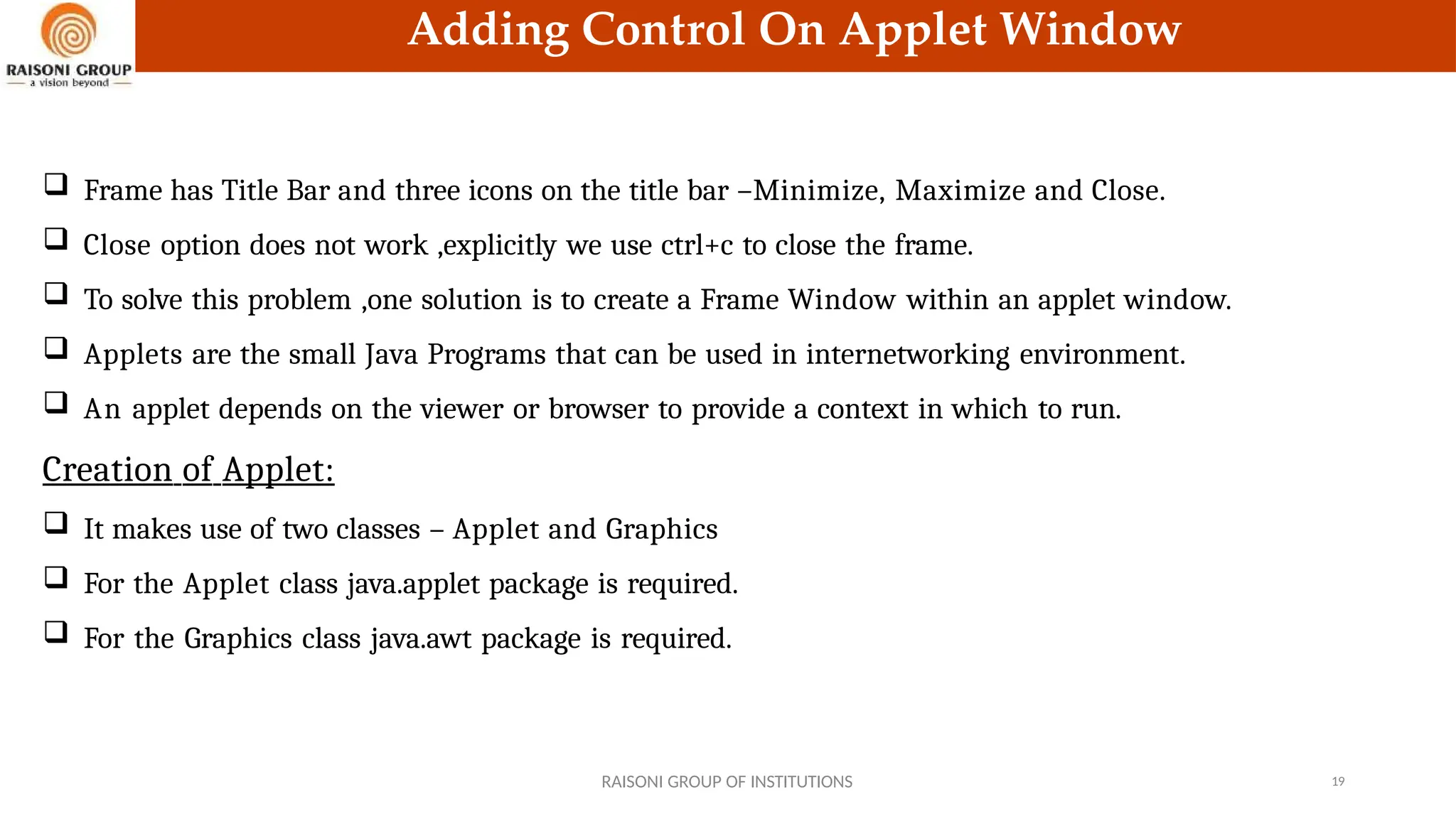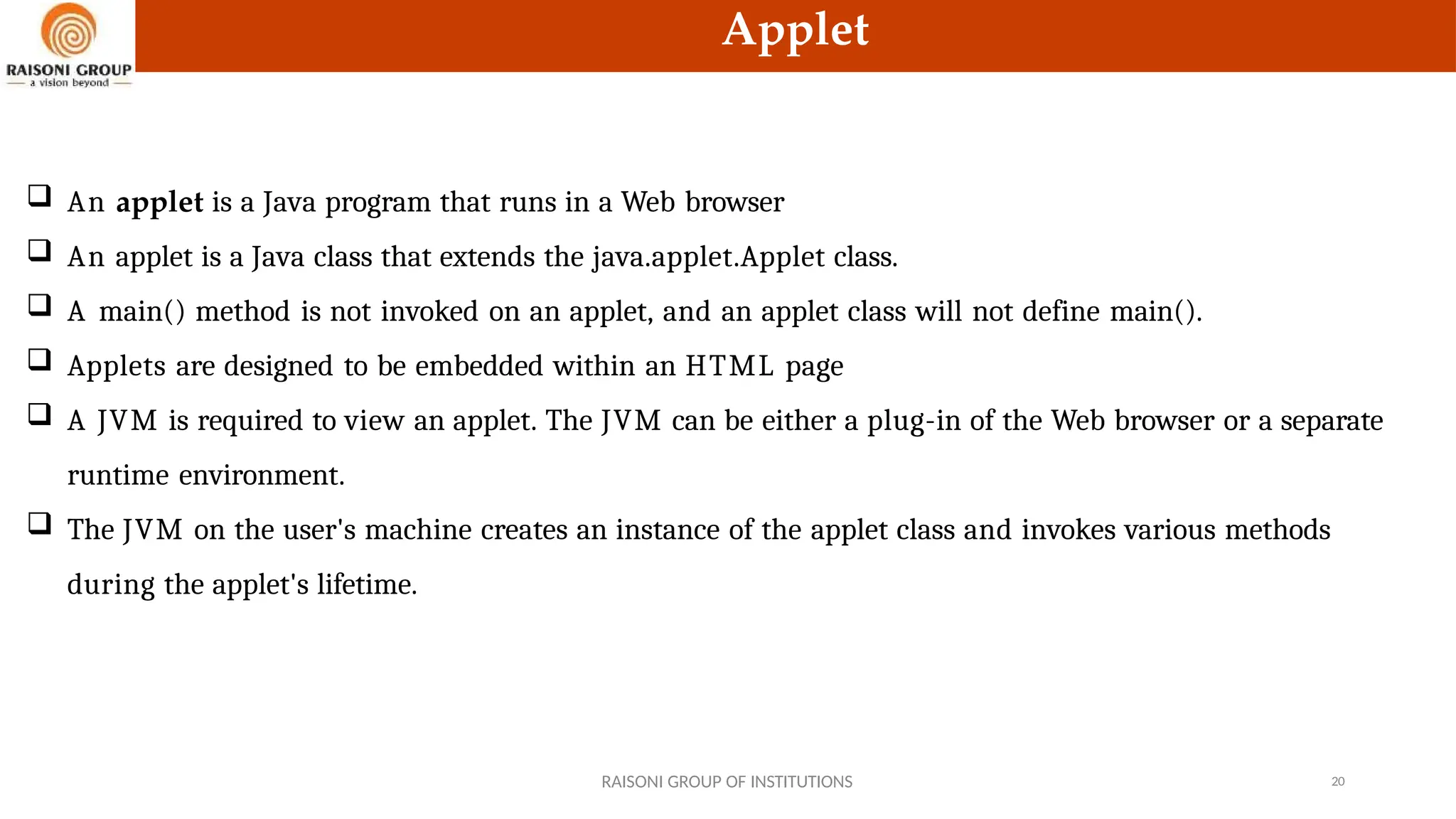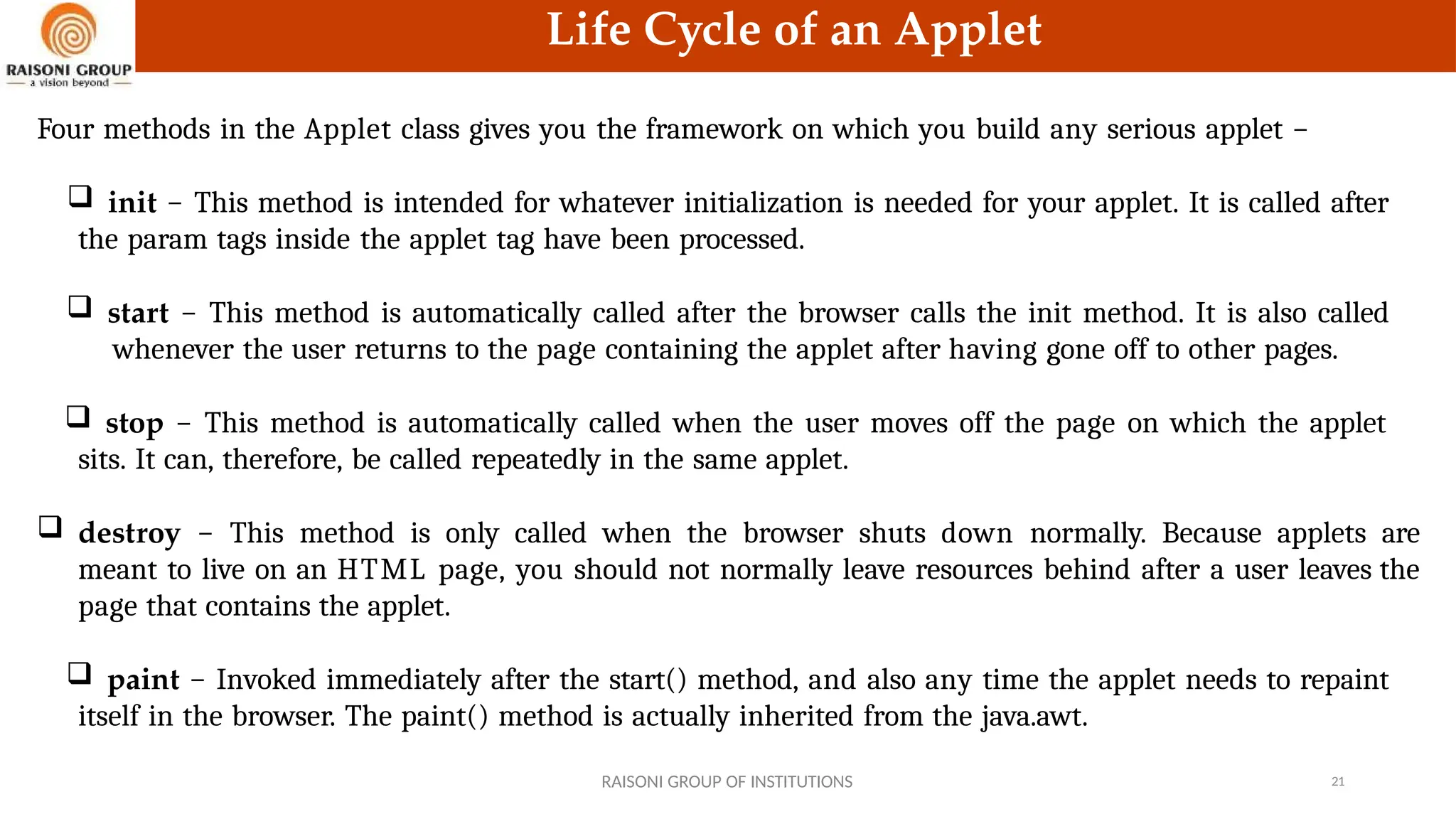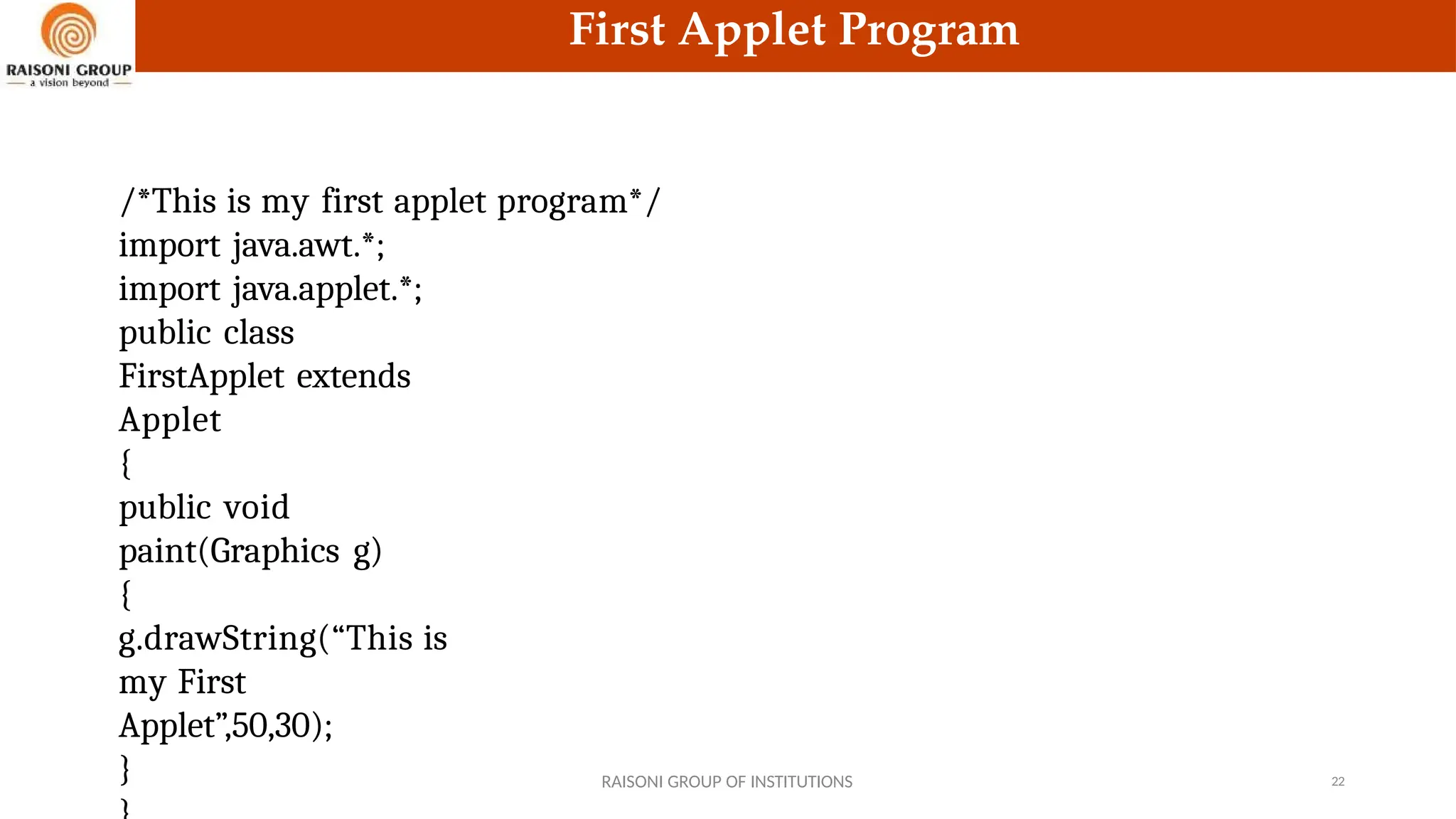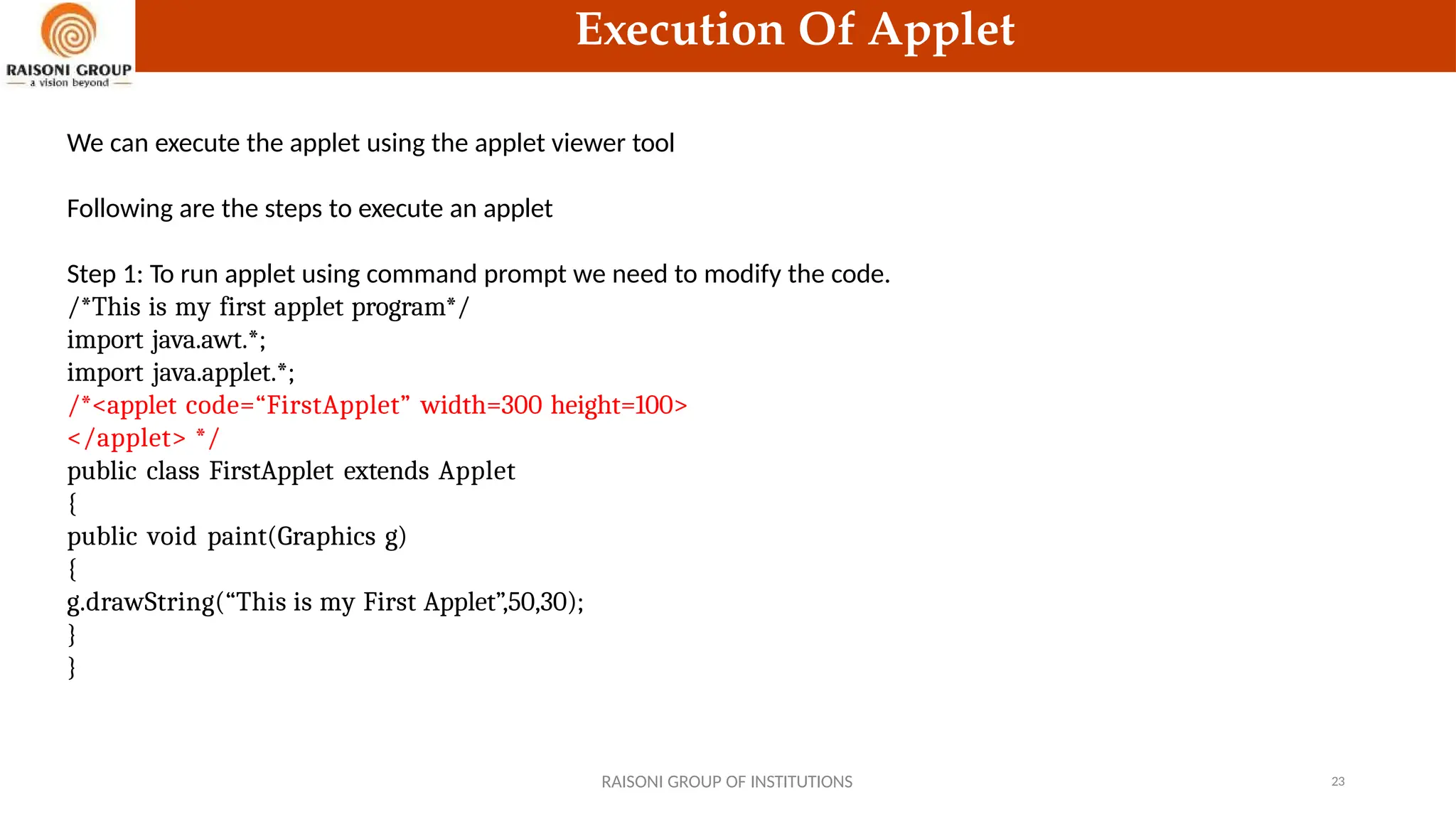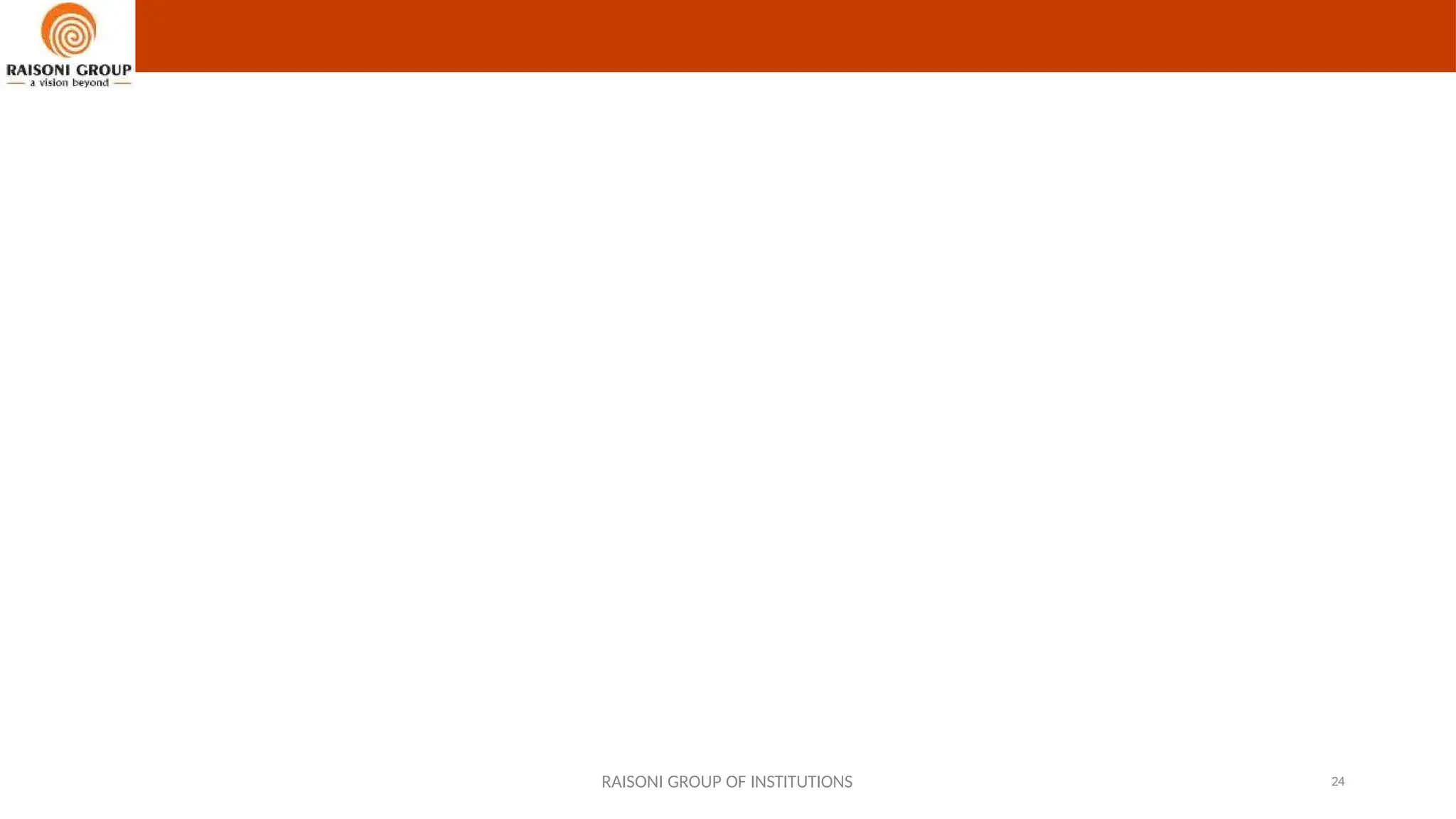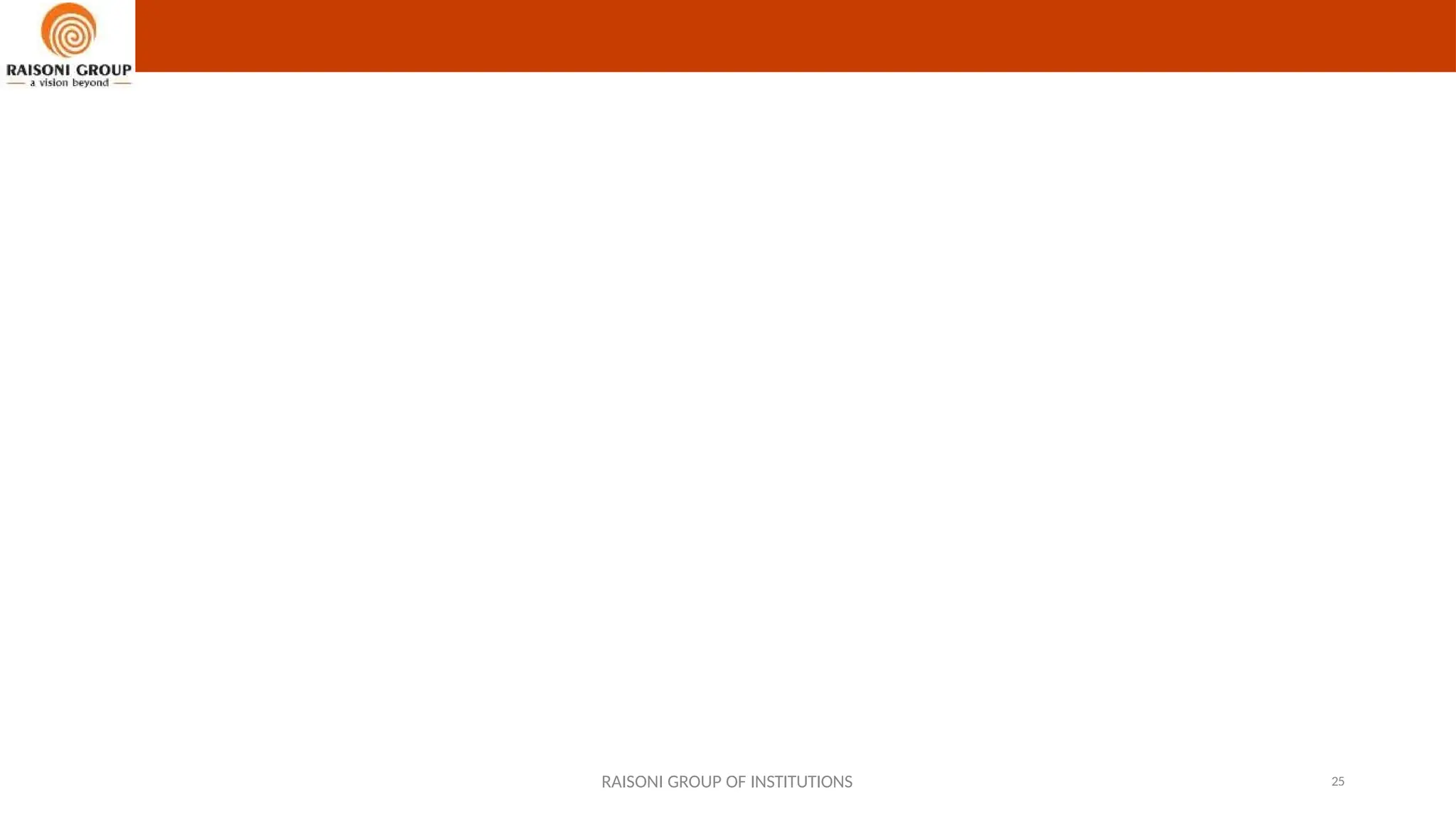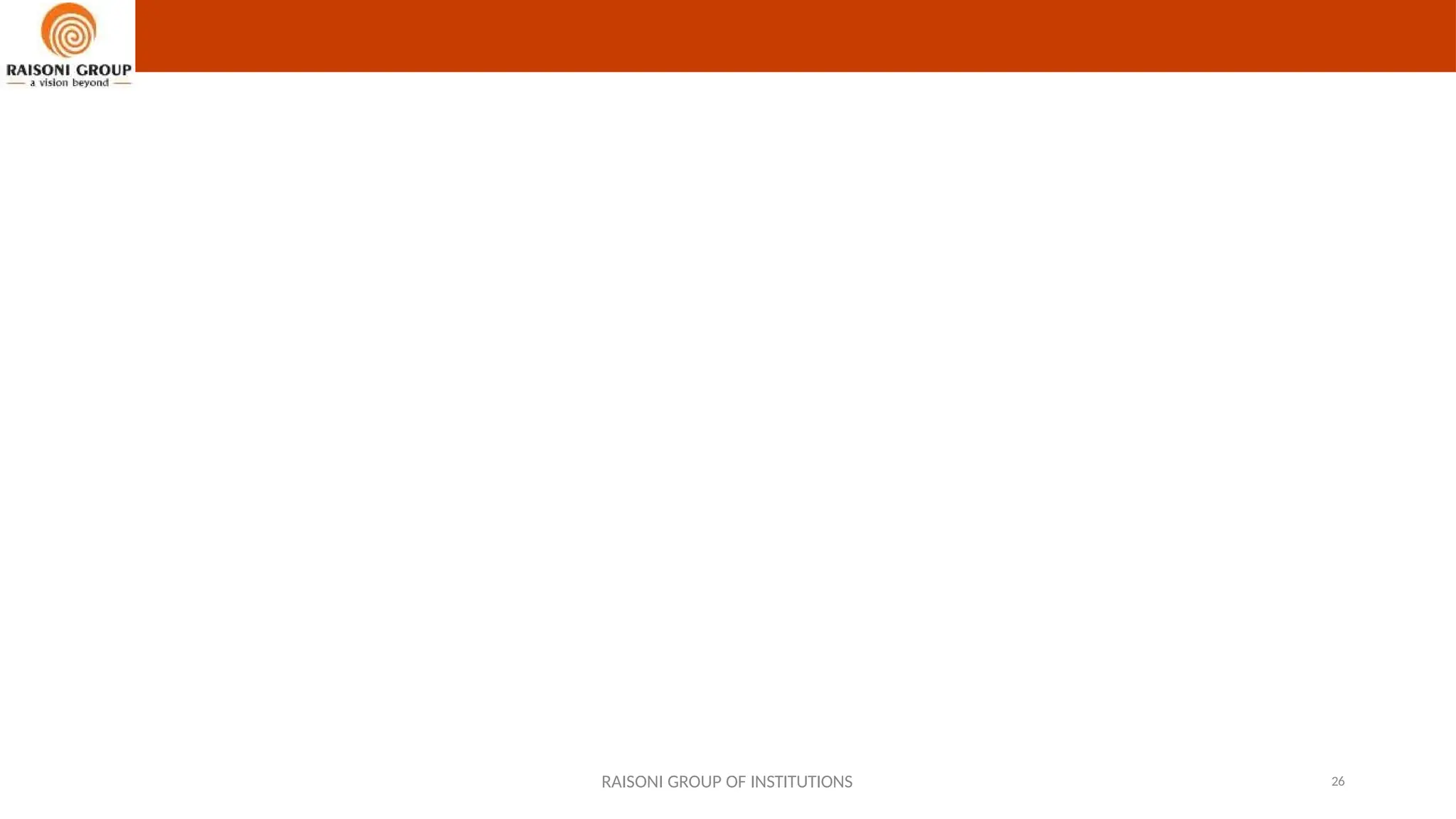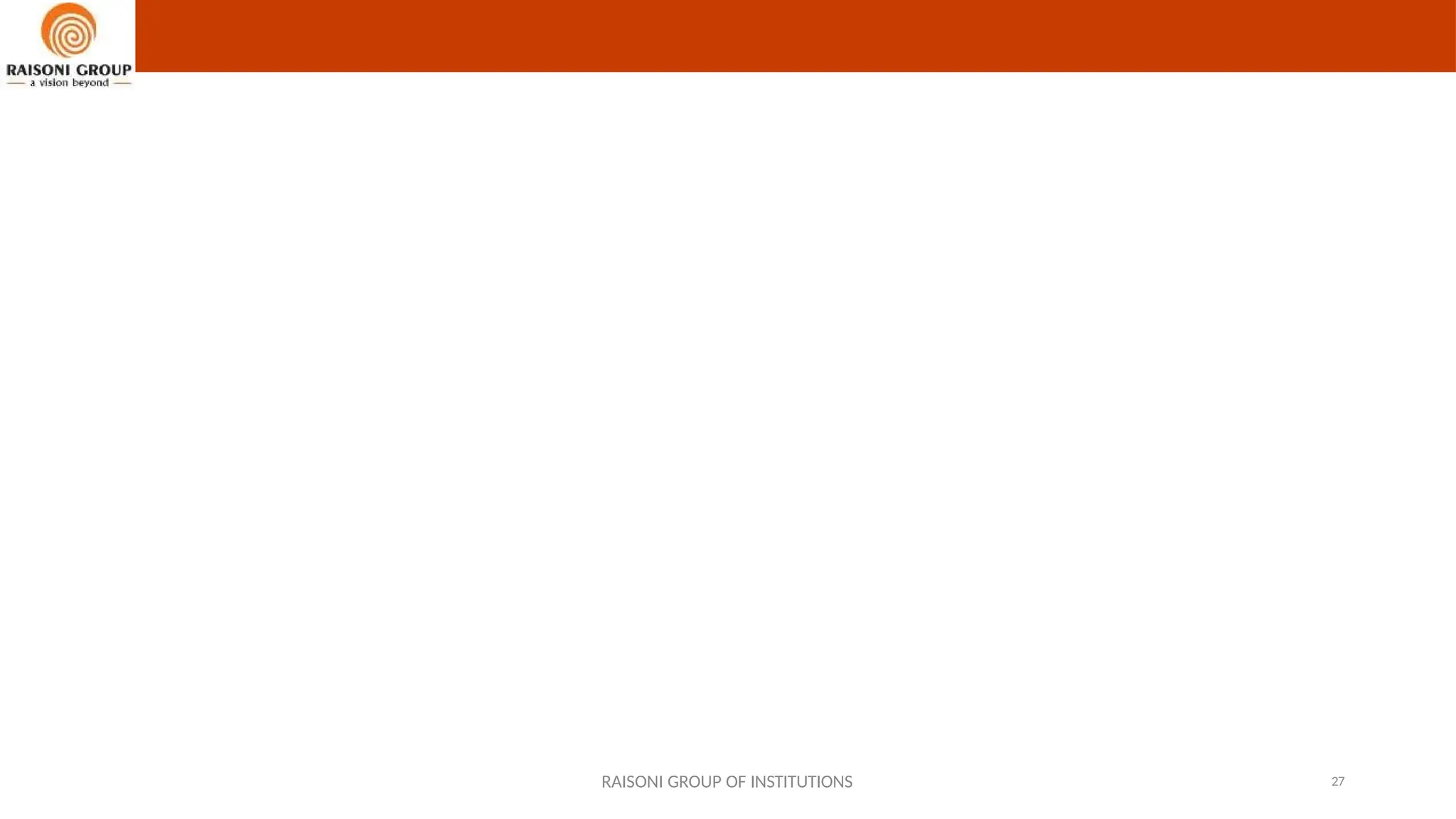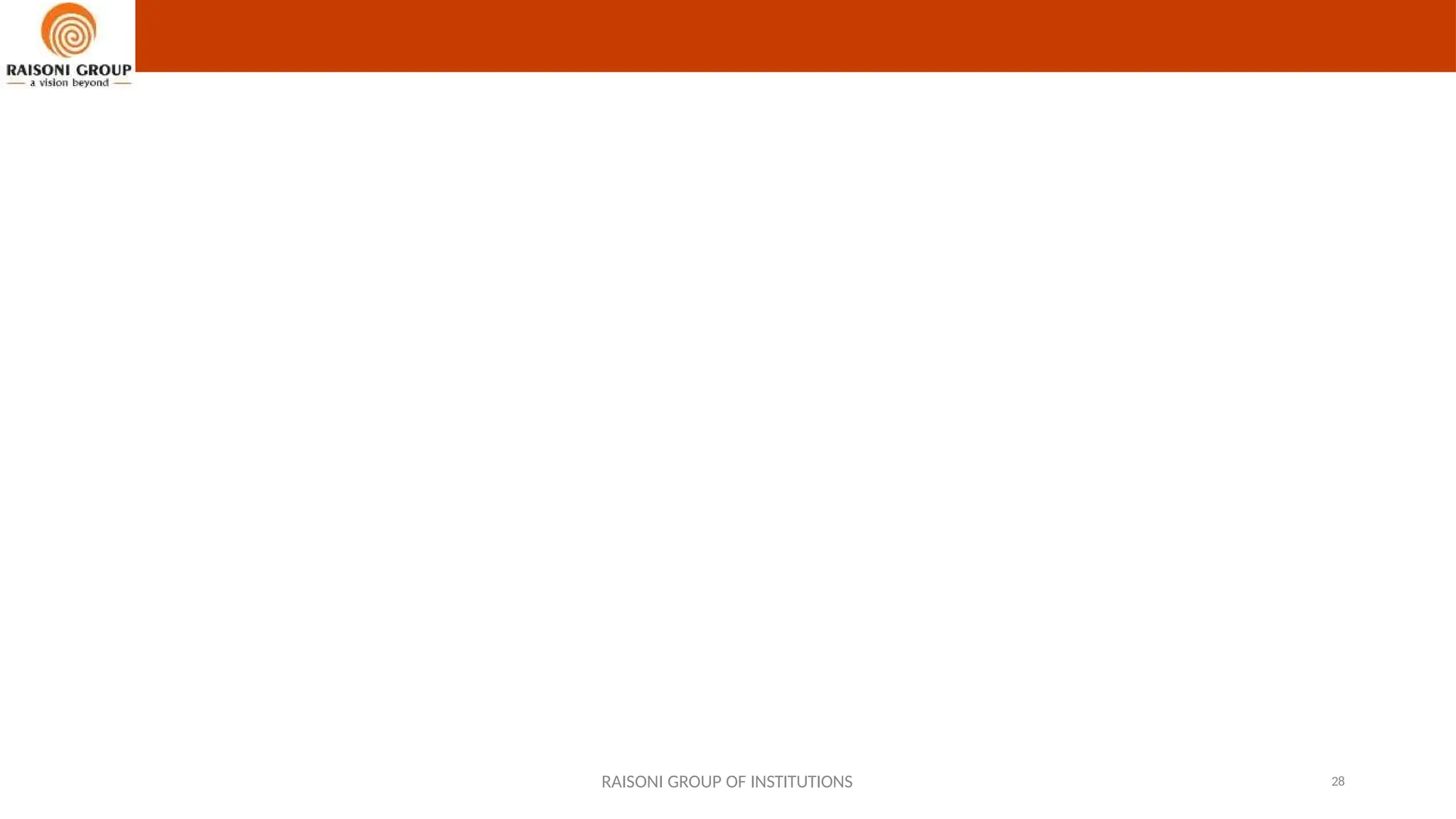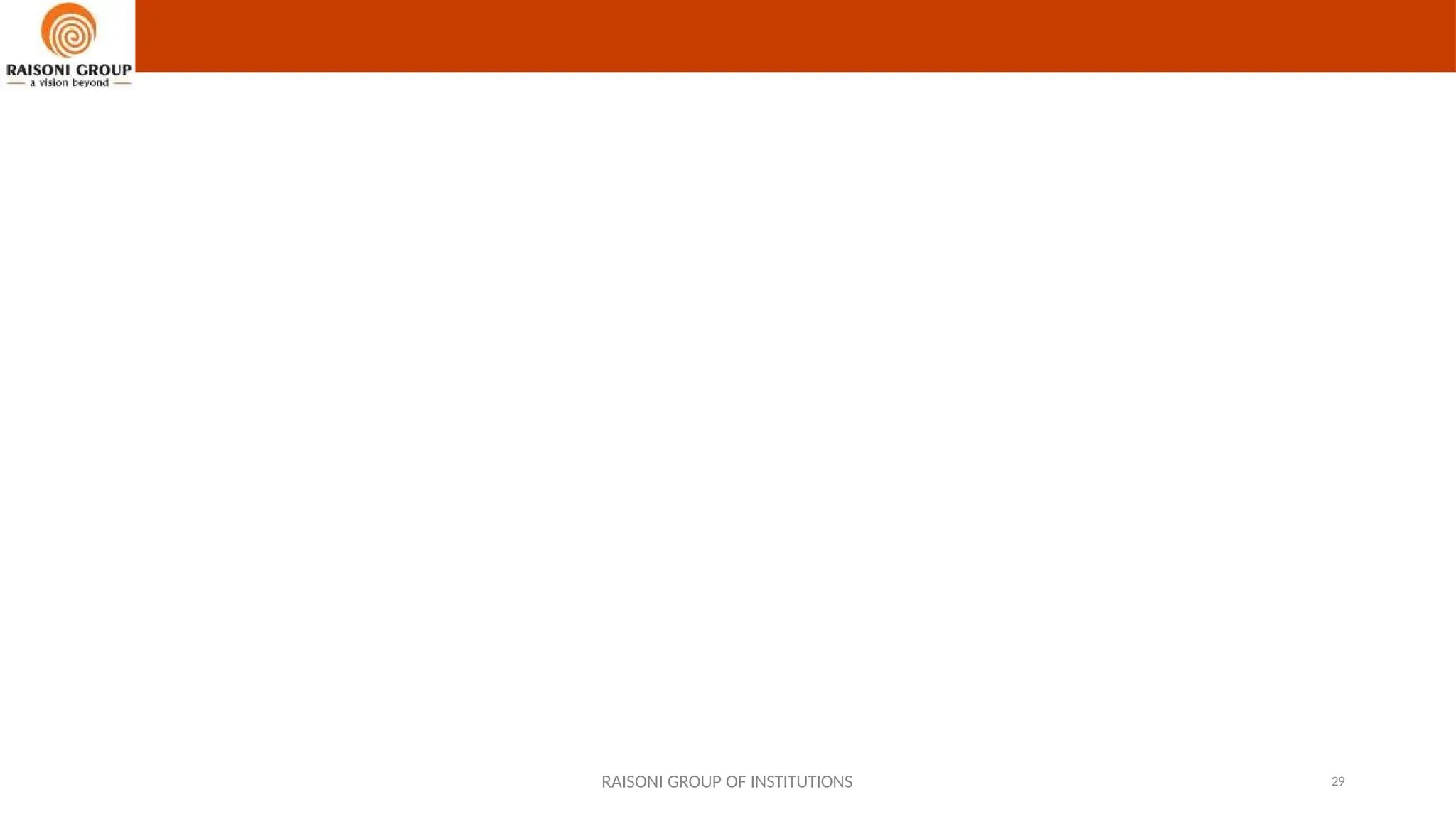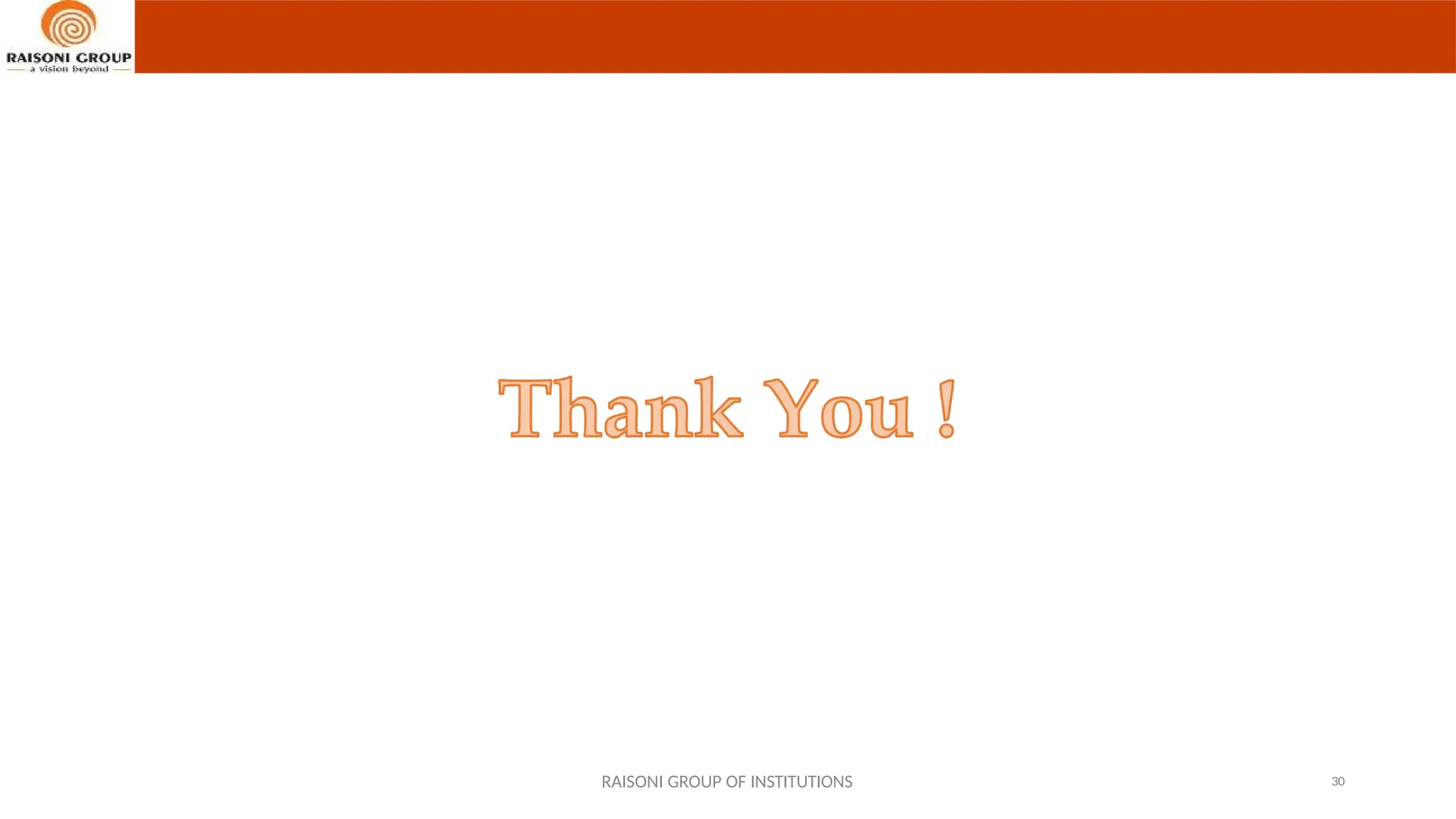The document provides an overview of the Abstract Window Toolkit (AWT) in Java, detailing its components and methods for creating graphical user interfaces (GUIs). It explains the functionality of various AWT controls such as frames, labels, buttons, checkboxes, and lists, along with code examples for their implementation. Additionally, it covers the lifecycle of applets and how to execute them within a web browser environment.
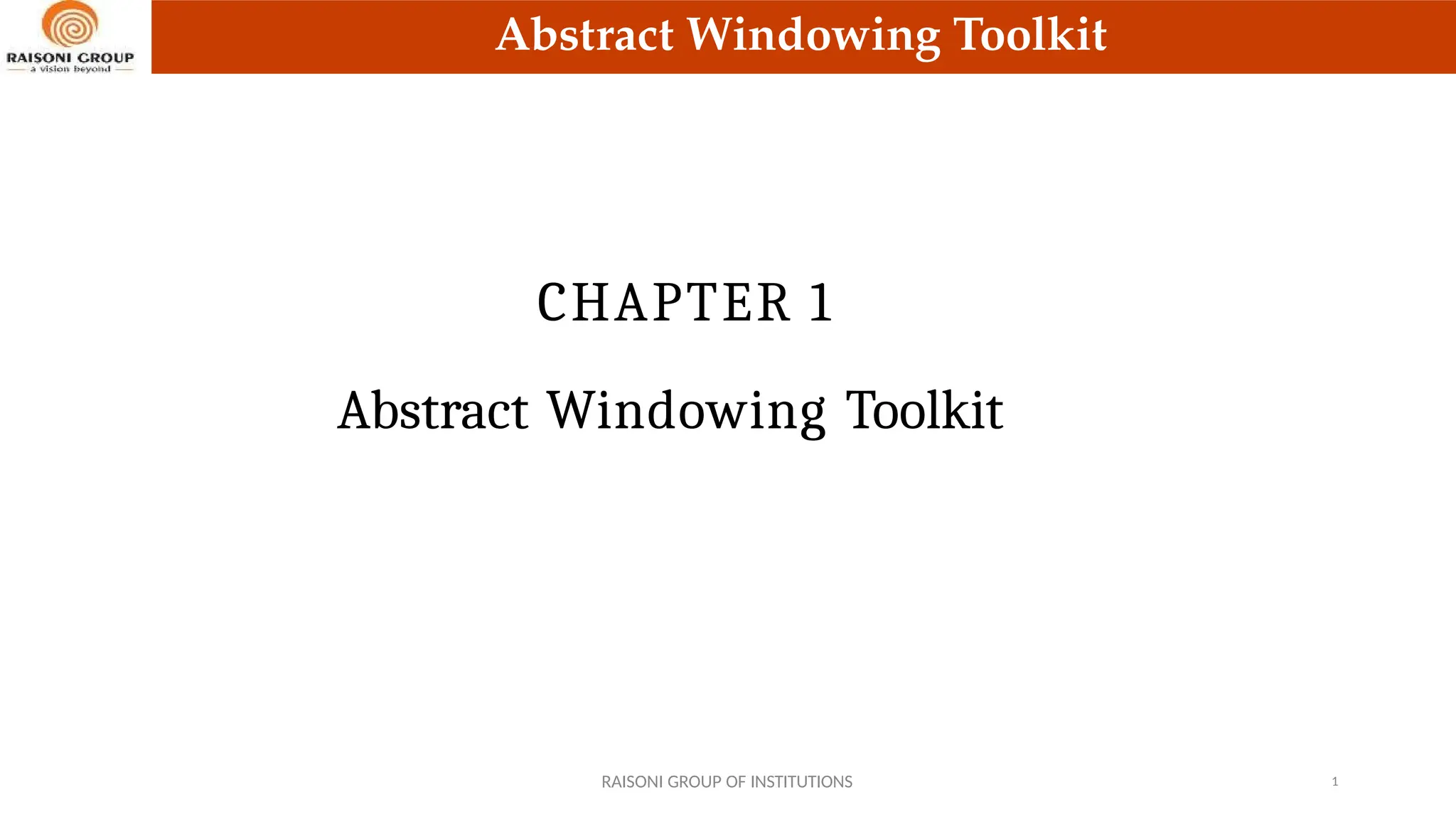
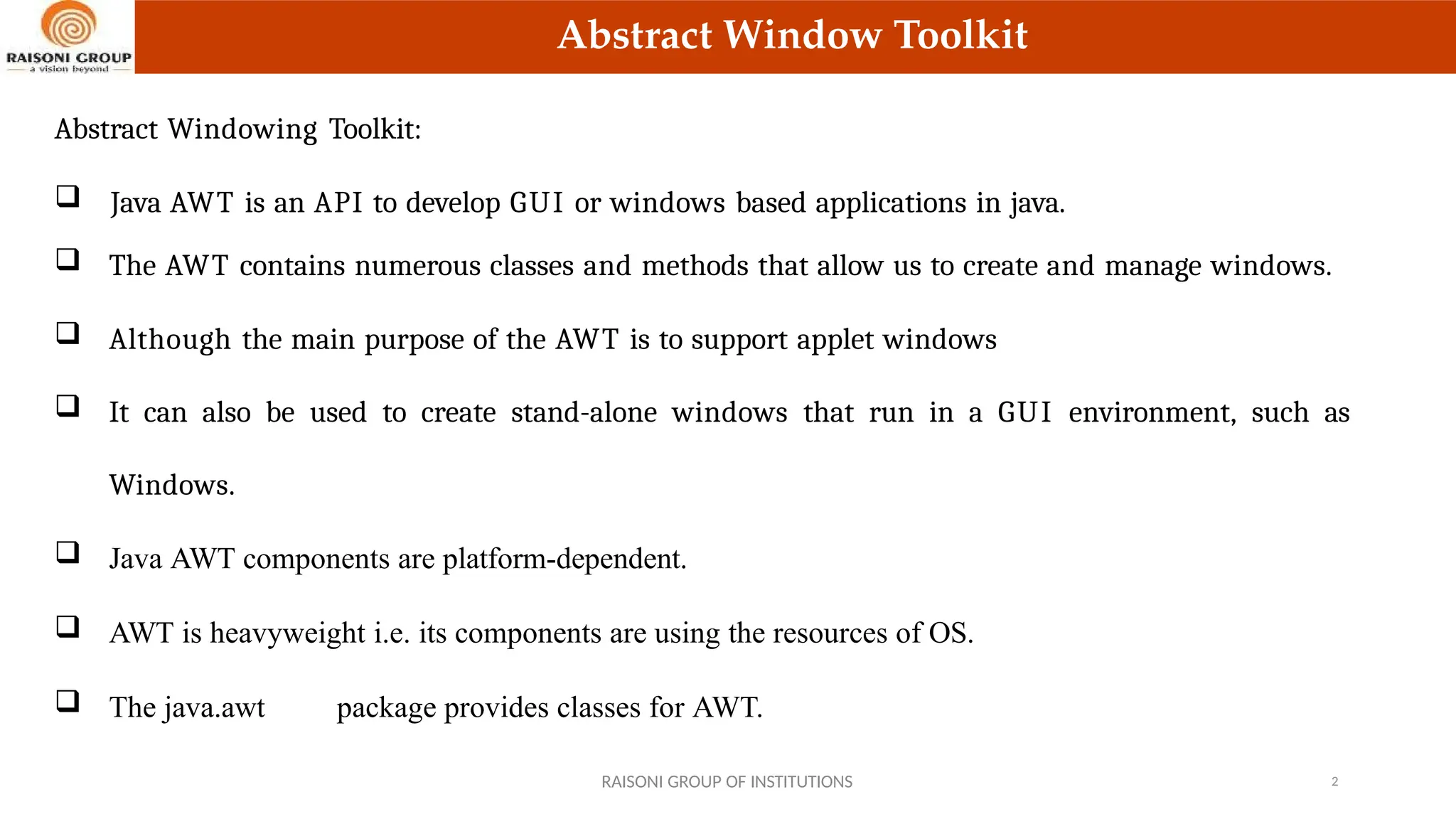
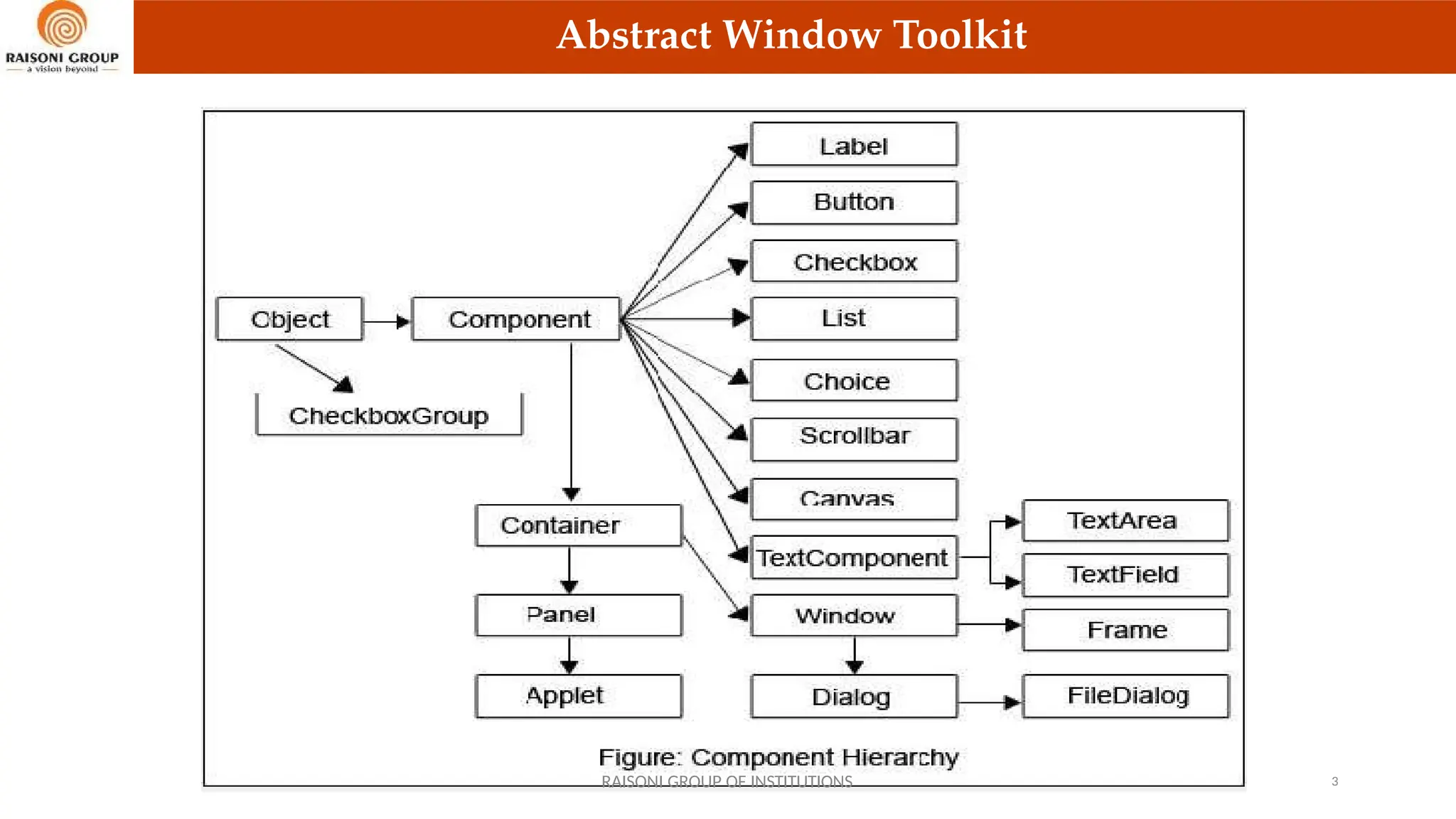
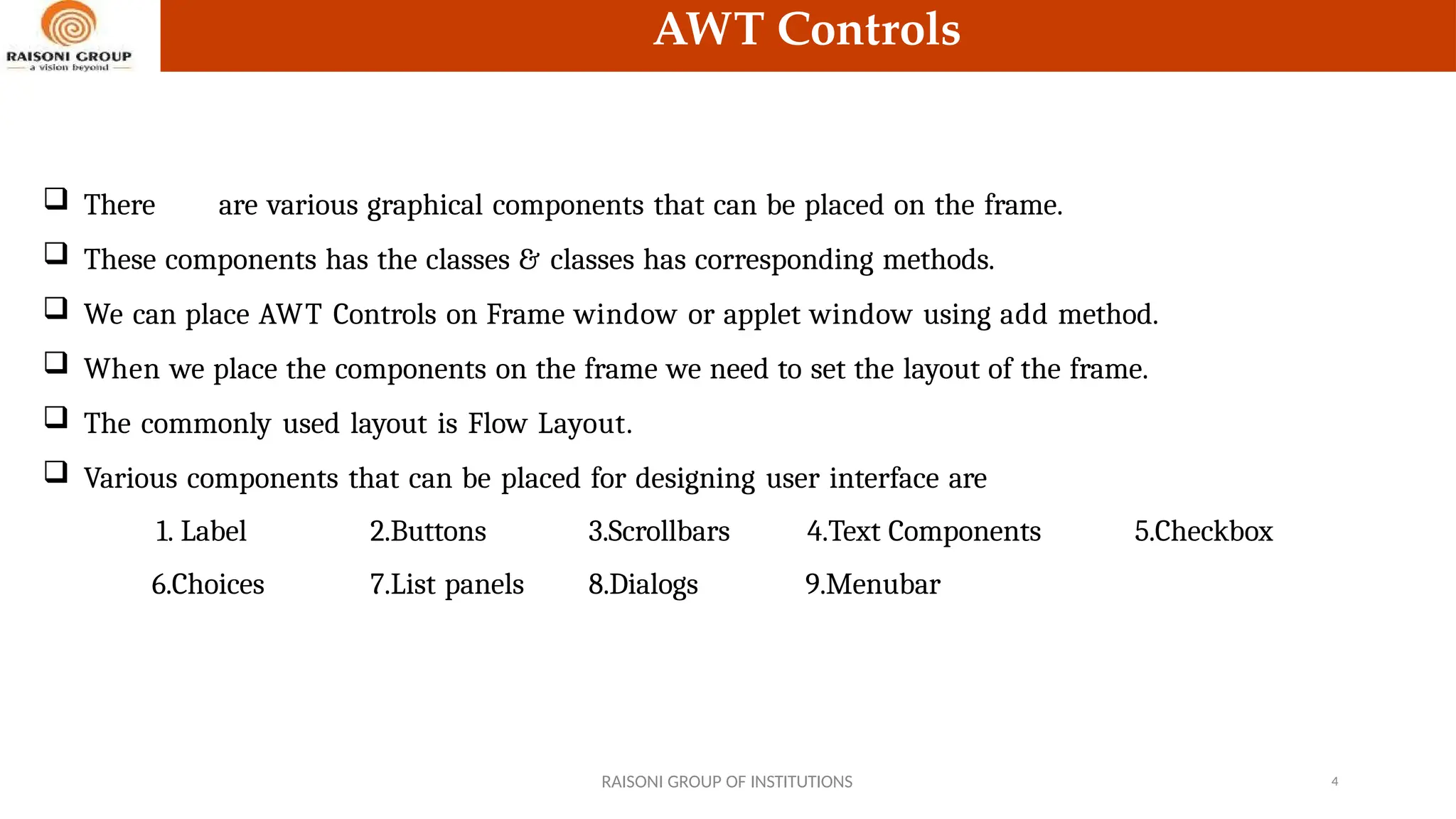
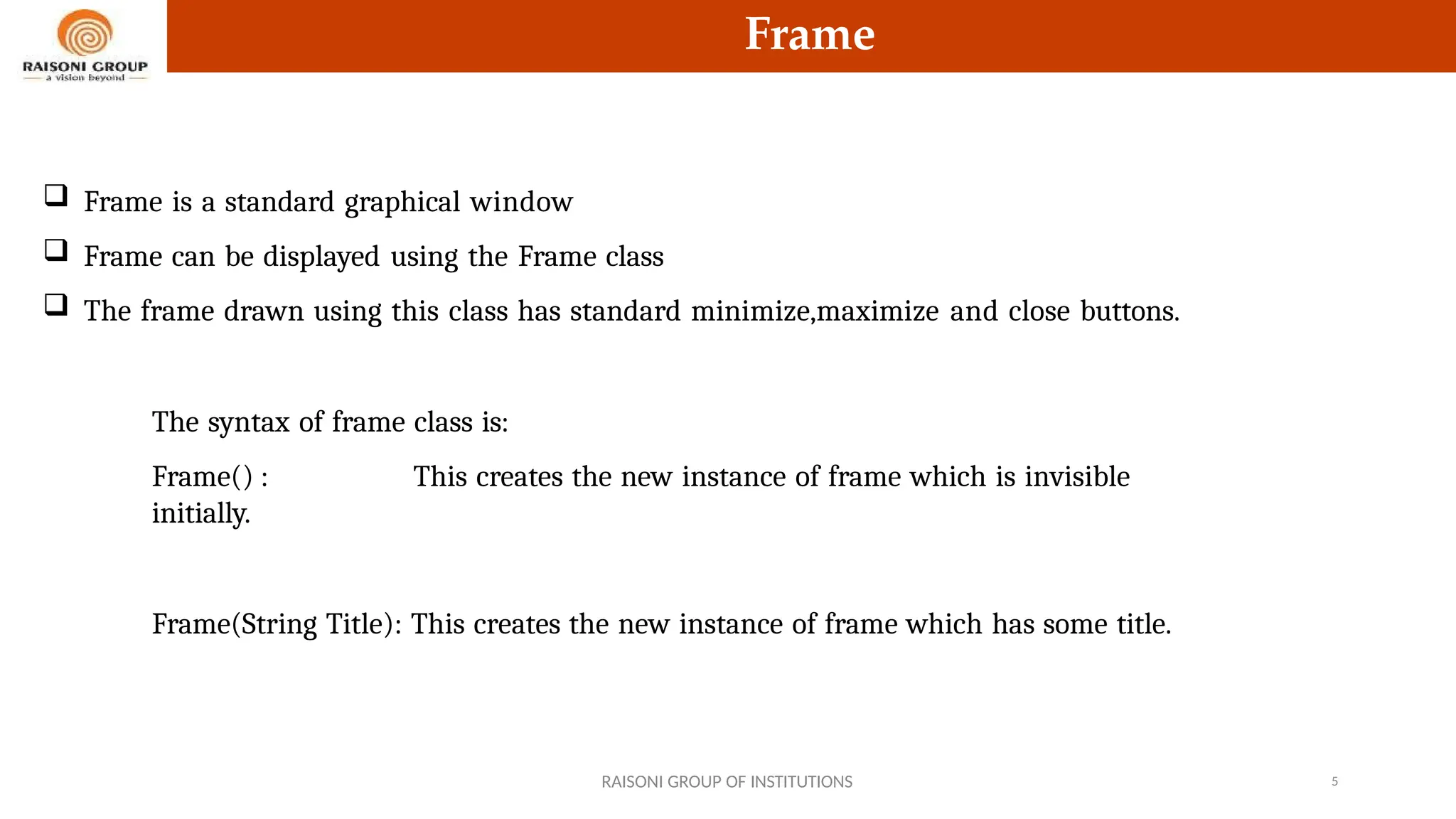
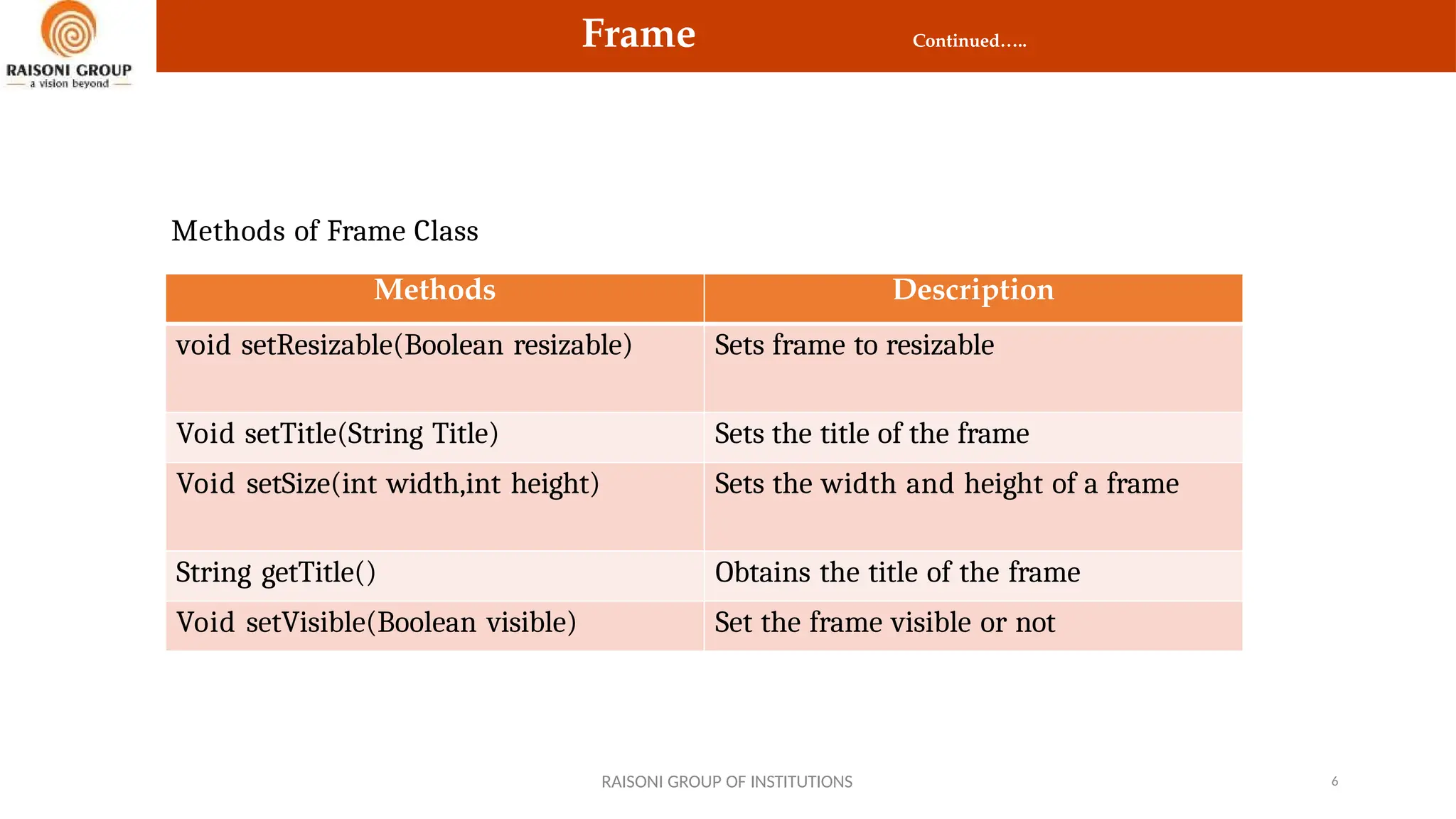
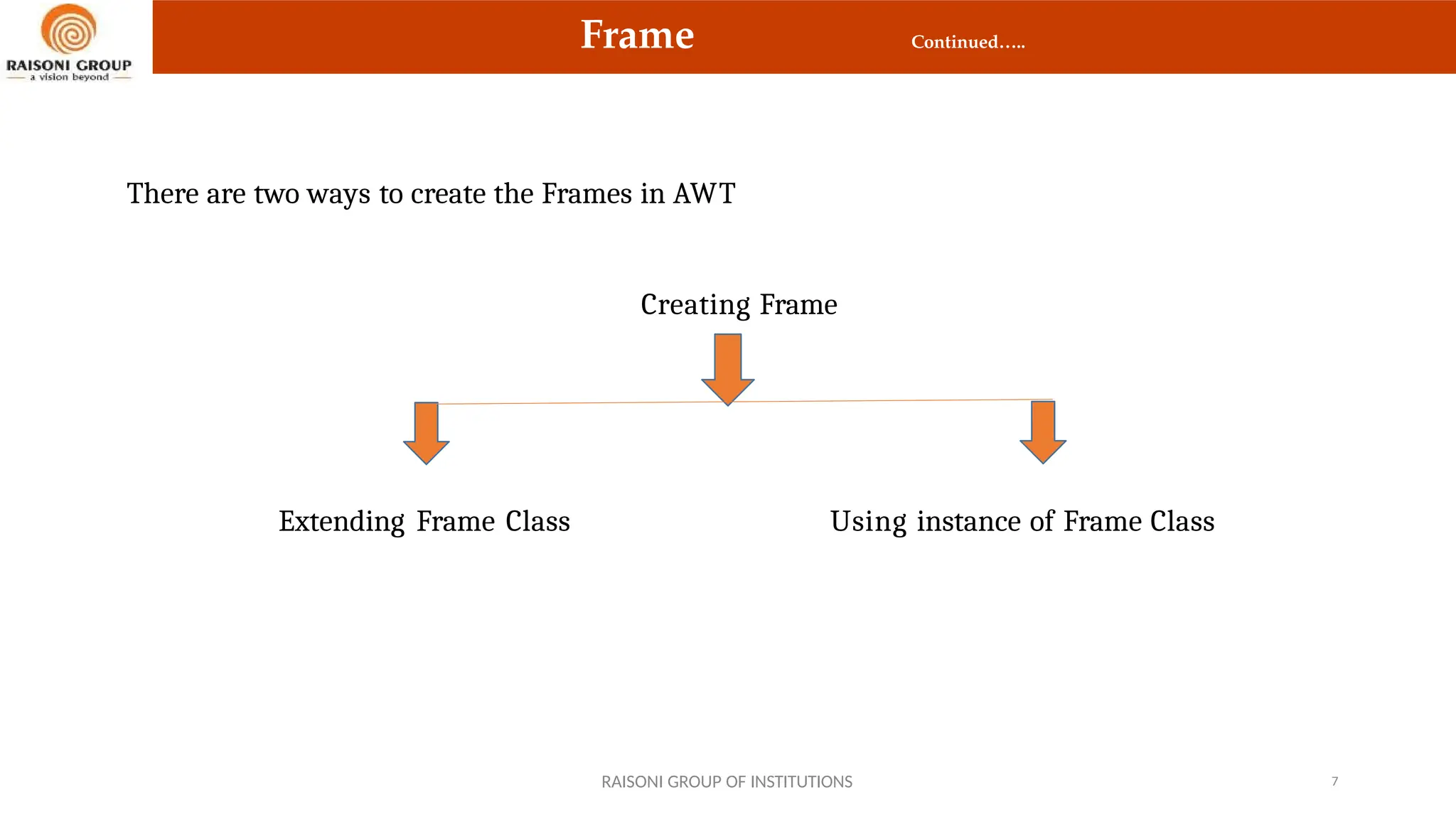
![Frame
Program to create java frame by using an instance of Frame class
import java.awt.*;
class Myframe1
{
public static void main(String args[])
{
Frame f=new Frame();
f.setVisible(true);
f.setSize(400,200);
}
}
Output
RAISONI GROUP OF INSTITUTIONS 8](https://image.slidesharecdn.com/lecture2introductiontoawt1-241013141534-20a1441e/75/Lecture-2-Introduction-to-AWT-1-ppt-hello-8-2048.jpg)
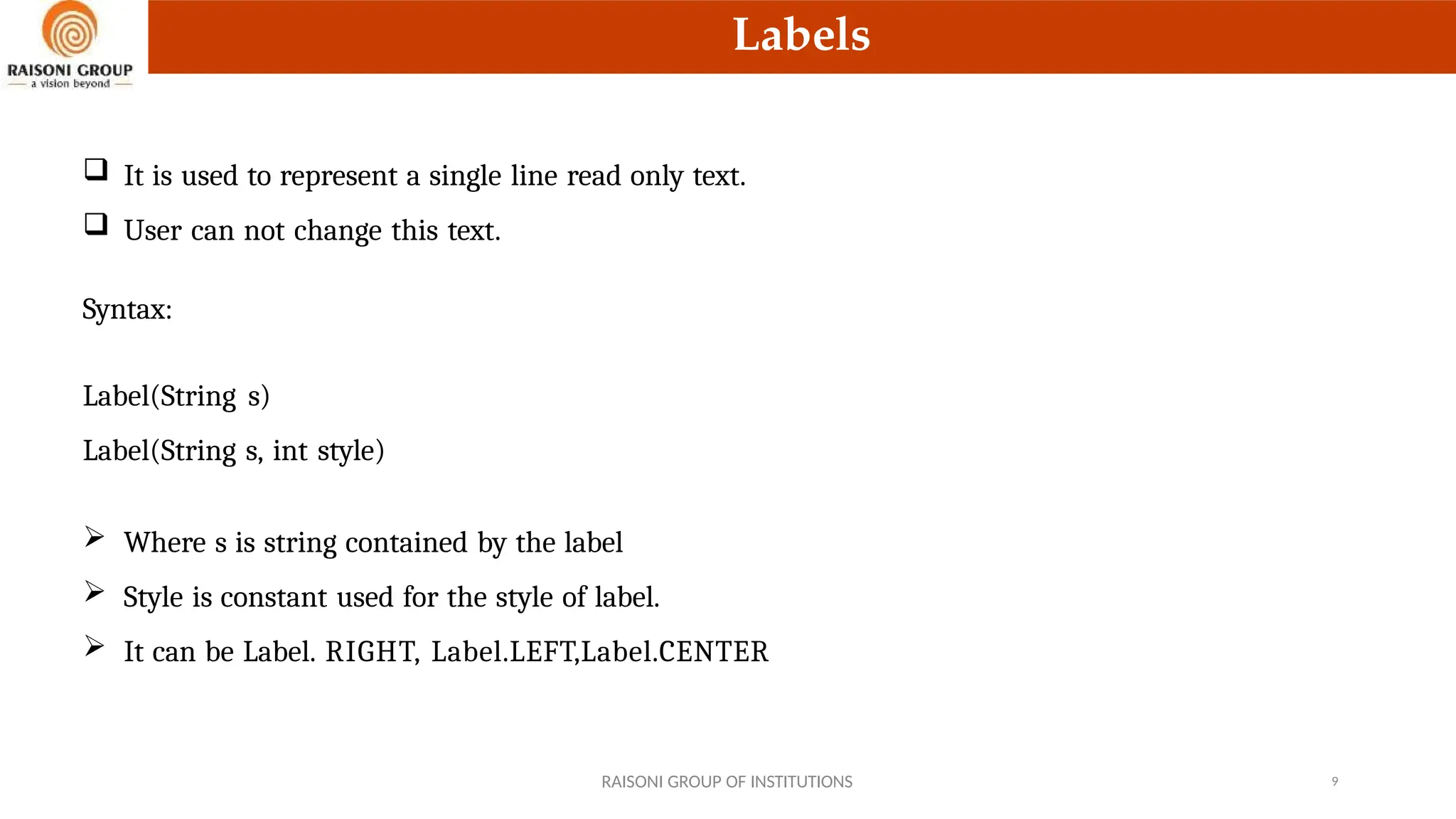
![Label
Program to demonstrate the use of Label Component
import java.awt.*;
class Label_demo
{
public static void main(String args[])
{
Frame f=new Frame("Label Demo Program");
f.setSize(300,200);
f.setVisible(true); f.setLayout(new
FlowLayout()); Label l1=new
Label("OK"); Label l2=new
Label("Cancel"); f.add(l1);
f.add(l2);
}
}
Output
RAISONI GROUP OF INSTITUTIONS 10](https://image.slidesharecdn.com/lecture2introductiontoawt1-241013141534-20a1441e/75/Lecture-2-Introduction-to-AWT-1-ppt-hello-10-2048.jpg)
![RAISONI GROUP OF INSTITUTIONS 11
Buttons
Buttons are the push buttons.
This component contains a label and when it is pressed it generates an event.
Syntax: Button(String s)
Program to demonstrate the use of Button Component
import java.awt.*;
class Button_demo
{
public static void main(String args[])
{
Frame f=new Frame(“Button Demo Program”);
f.setVisible(true);
f.setSize(400,200);
f.setLayout(new FlowLayout());
Button b1=new Button("YES");
Button b2=new Button("NO");
f.add(b1);
f.add(b2); }}
Output](https://image.slidesharecdn.com/lecture2introductiontoawt1-241013141534-20a1441e/75/Lecture-2-Introduction-to-AWT-1-ppt-hello-11-2048.jpg)
